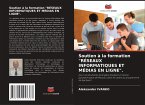This book presents both the theoretical foundation and numerical simulations for design and analysis of a multi-agent dynamic system on the collective formation behavior patterns of grouped agents. A mass model with tunable control parameters is proposed. This model can realistically represent the aggregation pattern and the formation shape of multiple agents. Stability analysis is also provided to prove the stability of the given second-order dynamic system. Several simulations are also given according to the proposed model to show formation patterns and their collective behavior. The research on self-organizing characteristics of collective behaviors has a wide range of applications in nature and engineering. The formation such as a flock of birds, a school of fish, or a swarm of locusts, is the emergence of ordered state in which the moving agents can be self organized as formation. Design and control of the self-organizing dynamic system has also implications on deployment ofmobile wireless sensor networks, attitude alignment of satellite clusters and congestion control of communication networks.
Bitte wählen Sie Ihr Anliegen aus.
Rechnungen
Retourenschein anfordern
Bestellstatus
Storno








